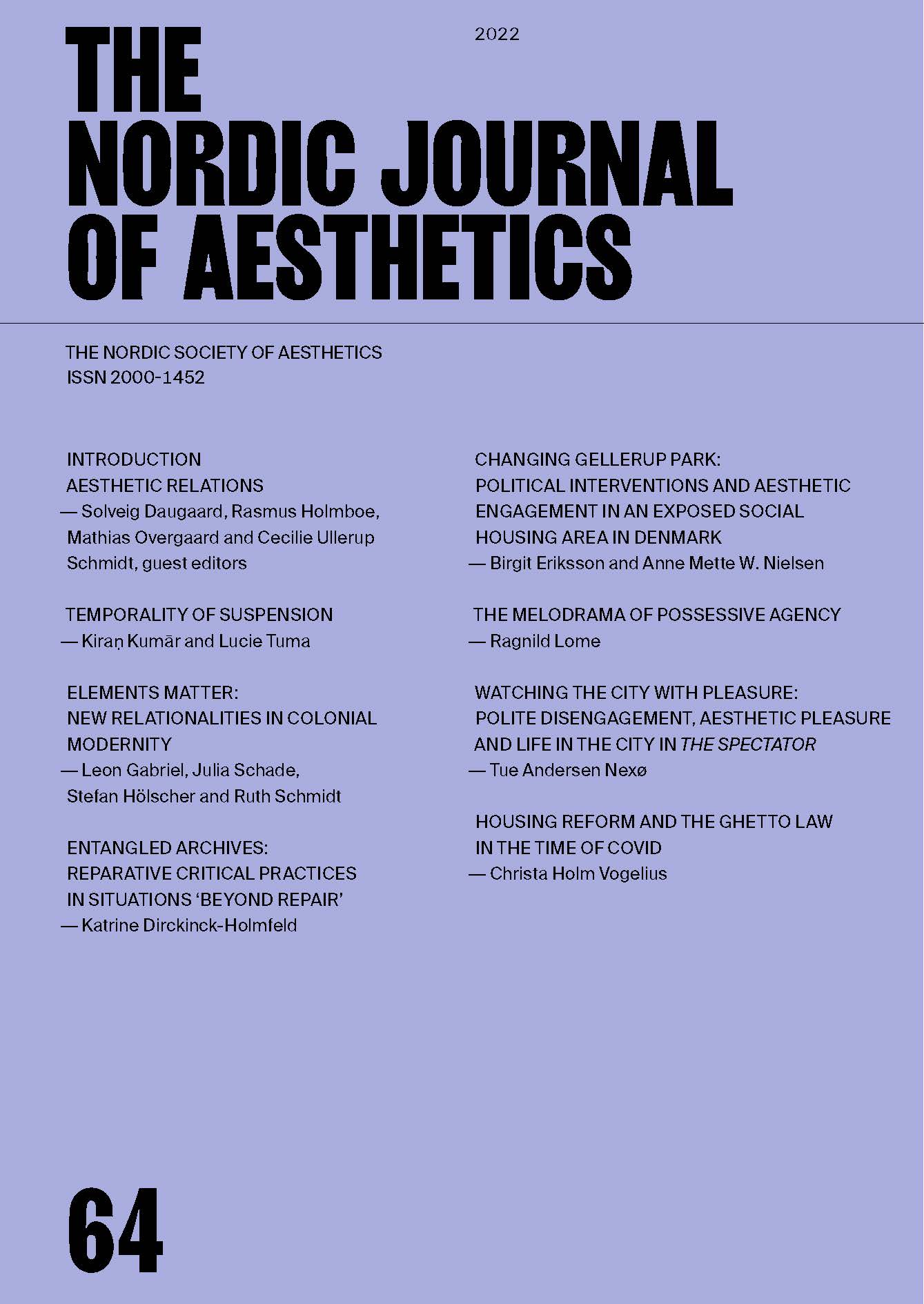Changing Gellerup Park
Political Interventions and Aesthetic Engagement in an Exposed Social Housing Area in Denmark
DOI:
https://doi.org/10.7146/nja.v31i64.134221Keywords:
Social housing areas, Danish ghetto act, art and cultural policies, public art projects, betterment agenda, political timing specific artAbstract
Some low-income social housing neighborhoods are undergoing radical transformations in Denmark. Classified as “ghettos” and “parallel societies,” and marked by area-specific legislation, we identify a triple exposure in these neighborhoods. The residents are exposed to inequality, stigmatization, and discriminatory inter-ventions. Parallel to this, cultural policies and programs have ap-proached these same neighborhoods based on the assumption that they can be “elevated” through art. Drawing upon a broader re-search in art project in four social housing areas (Eriksson, Nielsen, Sørensen and Yates, 2022), this article focuses on Gellerup Park in Aarhus and considers how two site-specific art platforms address the site and time-specific conditions of the area, offering alterna-tive relations and forms of engagement.
Downloads
Published
How to Cite
Issue
Section
License
Copyright (c) 2022 Birgit Eriksson, Anne Mette W. Nielsen

This work is licensed under a Creative Commons Attribution 4.0 International License.
Authors who publish with this journal agree to the following terms:
- Authors retain copyright and grant the journal right of first publication with the work simultaneously licensed under a Creative Commons Attribution License that allows others to share the work with an acknowledgement of the work's authorship and initial publication in this journal.
- Authors are able to enter into separate, additional contractual arrangements for the non-exclusive distribution of the journal's published version of the work (e.g., post it to an institutional repository or publish it in a book), with an acknowledgement of its initial publication in this journal.
- Authors are permitted and encouraged to post their work online (e.g., in institutional repositories or on their website) prior to and during the submission process, as it can lead to productive exchanges, as well as earlier and greater citation of published work (See The Effect of Open Access).




